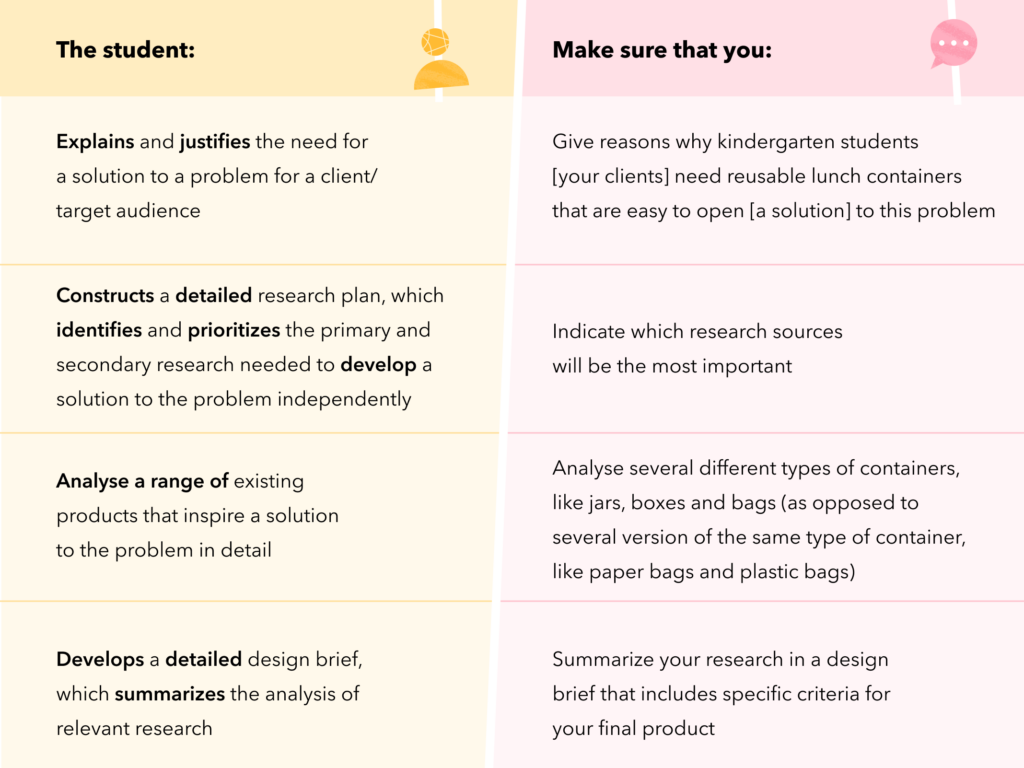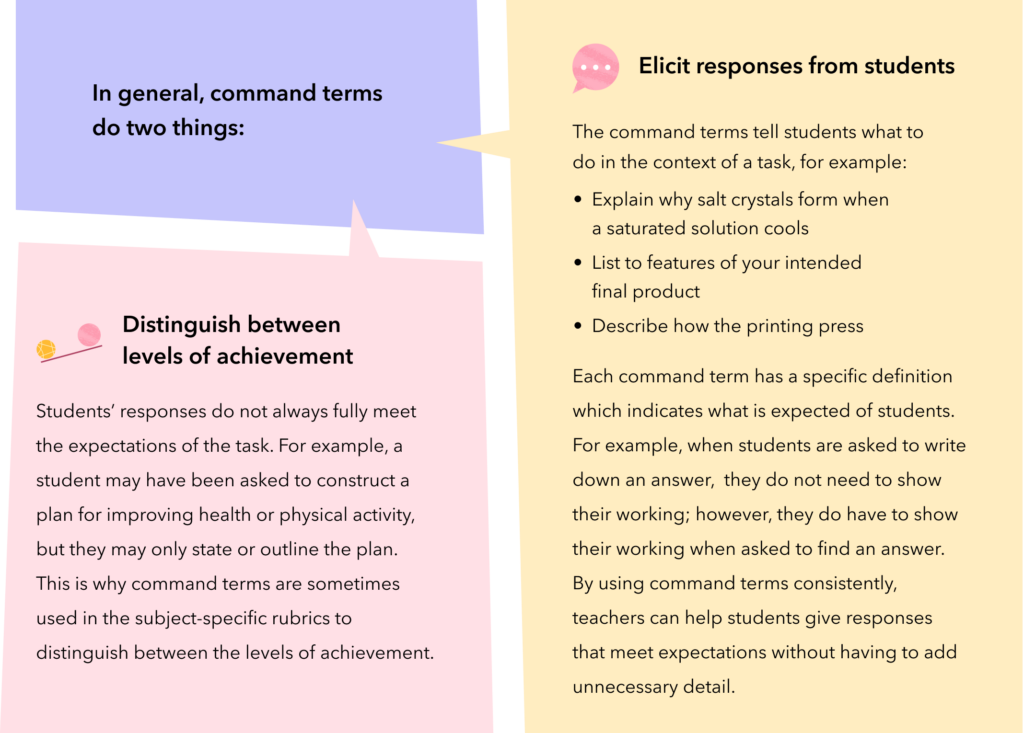The subject-specific criteria and level descriptors are designed to be applied to a range of tasks. This can often make their wording seem ambiguous, making it difficult to know specifically what is expected in the context of a particular task. That’s why task-specific clarifications are an important part of each task. They help students understand what is expected of them. Likewise, developing task-specific clarifications can help you refine the tasks you design by deciding what features of the task correspond with the level descriptors of the criteria being assessed. There are a variety of ways to develop task-specific clarifications:
- Replace general wording with words that are more specific to the task. For example,
- Arts Bi: demonstrate the acquisition and development of
the skills and techniques of the art form studiedcomposition, depth of field and perspective in photography - Sciences Dii: discuss and evaluate the various implications of using
sciencegenetic engineering and its application tosolve a specific problem or issueimprove food production to meet the needs of a growing population
- Arts Bi: demonstrate the acquisition and development of
- Add a checklist or annotations to the task sheet so that students know what is expected. For example,
- See these annotations for a task assessing MYP mathematics criterion C:

- See this checklist for a task assessing MYP design criterion A:

- Have students examine and assess samples of work to develop an understanding of what success looks like in the context of the task. For example:
- Students could examine an editorial from a recent newspaper to discuss the extent to which it employ[s] organizational structures that serve the context and intention (Language and Literature Bi).
- Does it make sophisticated use of organizational structures that serve the context and intention effectively (level 7-8)? If not, what changes would make it sophisticated and more effective?
- Give students a sample of work from the last time you taught the unit and have students discuss whether the work thoroughly interprets a range of different perspectives and their implications (Individuals and Societies Div).
- Students could examine an editorial from a recent newspaper to discuss the extent to which it employ[s] organizational structures that serve the context and intention (Language and Literature Bi).
Check out this 5-step process for developing crystal clear success criteria and powerful rubrics that can be used in your classroom!

Command Terms
You’ll have noticed terms such as identify, describe, and explain in the examples above. These terms are an important element of task-specific clarifications – and assessment in general – and are called command terms.
In summative tasks, including MYP eAssessments, and in the rubrics used to assess them, you will often see command terms. These usually appear in bold in MYP publications. The command terms have specific definitions that help to clarify exactly what is expected at each level of achievement.

To learn more about command terms, and demystify them for your students as well, give this insightful blog a read!





